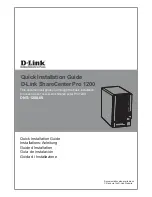
ZXR10 5900E Series Configuration Guide (IPv6)
The following are differences between IPv4 and IPv6 in header format.
and
are the header formats of IPv4 and IPv6 respectively. (Numbers
in the tables refer to bit numbers.)
Figure 1-1 IPv4 Header Format
Figure 1-2 IPv6 Header Format
An IPv6 header is simpler than an IPv4 header in structure because many fields in the
IPv4 header that are not frequently used are deleted from the IPv6 header, and are put
into its options and header extension, which are defined more strictly.
l
IPv4 contains ten fields with fixed length, two address spaces and some options, while
IPv6 contains only six fields and two address spaces.
l
Although an IPv6 header occupies 40 bytes, which is 1.6 times of an IPv4 header with
24-bytes, it does not consume too much memory capacity due to its fixed length (the
length of the IPv4 header is variable).
l
The following six fields are deleted from an IPv4 header: header length, type of
service, identifier, flags, fragmented offsets and header checksum.
Names and
some functions of the three fields of total length, protocol and Time to Live (
) are
changed, and its optional functions is completely changed. Apart from this, two fields
are added: traffic type and flow label.
l
The IPv6 header format is greatly simplified, which effectively pares down overhead of
processing header by a router or switch. At the same time, IPv6 enhances the support
to the extension header and options, which not only allows more efficient forwarding,
but also provides sufficient supports for future load of new applications to networks.
1-2
SJ-20150114102049-011|2015-01-15 (R1.0)
ZTE Proprietary and Confidential













































